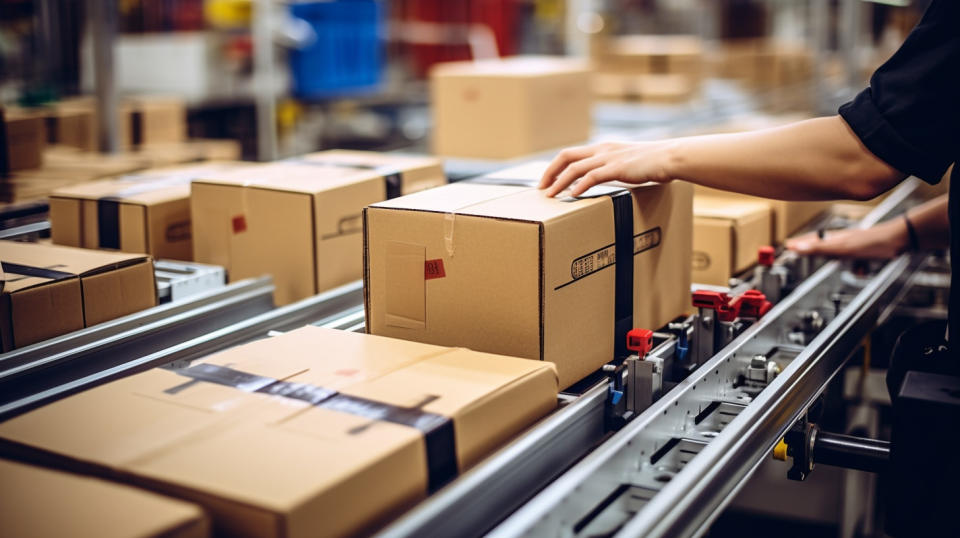Is International Paper Company (IP) a Good Buy Right Now?
We recently compiled a list of the 10 Best Land and Timber Stocks to Buy According to Hedge Funds. In this article, we are going to take a look at where International Paper Company (NYSE:IP) stands against the other land and timber stocks.
The land and timber industry supports various sectors such as construction, furniture manufacturing, and paper production. The industry is forecasted to be worth $342.55 billion in 2024 and is projected to reach $464.94 billion by 2029, reflecting a healthy compound annual growth rate (CAGR) of 6.3%. In fact, The World Bank predicts that the push for net zero emissions by 2050 could quadruple global timber demand.
This growth is fueled by a rising preference for wooden buildings as compared to concrete buildings since wooden construction produces very little waste and saves time. Moreover, concerns regarding CO2 emissions by the construction industry, which make up 36% of total emissions globally, have led to the adoption of timber in place of steel and concrete. This is because timber's role as a low-carbon alternative in construction helps decarbonize the industry. Furthermore, wood's natural ability to absorb CO2 makes it a more sustainable solution for the construction industry.
In addition to construction, timber is also used for wood fuel and industrial purposes. Around 90% of wood is used for fuel in Africa, Asia, and South America primarily, while 90% of wood in North America and 80% in Europe is utilized for industrial purposes.
The skyrocketing demand for timber raises a critical question: how can we ensure a long-term supply? Unlike fossil fuels, trees are renewable, but their growth is slow and takes 30 to 100 years. Sustainable practices rely on establishing new plantations, but finding suitable land is becoming difficult due to competition from other uses. Currently, most timber comes from natural forests: softwoods in the north and hardwoods in the south. However, this reliance is unsustainable.
Although plantations make up only 3% of the world's forests, they already provide about 50-60% of timber production. With the increasing demand for timber comes the responsibility to practice environmental stewardship. According to the Managing Director of Forestry at Gresham House, relying on well-managed plantations is needed for a sustainable timber supply. Certification programs like the Forest Stewardship Council (FSC) can help ensure responsible forest management, protecting biodiversity and ecological functions.
Over 200 million hectares of global forests are FSC-certified, demonstrating a growing commitment to sustainability within the industry. This number is expected to reach 300 million hectares by 2026. Moreover, consumers' growing preference for certified wood products is driving the demand for responsibly sourced timber. Another solution for balancing the growing demand for timber products with sustainable forest management practices is investment in reforestation. Initiatives like the Bonn Challenge aim to restore 350 million hectares of degraded land by 2030.
Our Methodology
To shortlist the best land and timber stocks to buy according to hedge funds, we relied on Insider Monkey’s extensive database of 920 hedge funds as of Q1 2024. We picked the land and timber stocks with the highest number of hedge fund investors. Why are we interested in the stocks that hedge funds pile into? The reason is simple: our research has shown that we can outperform the market by imitating the top stock picks of the best hedge funds. Our quarterly newsletter’s strategy selects 14 small-cap and large-cap stocks every quarter and has returned 275% since May 2014, beating its benchmark by 150 percentage points (see more details here).

A close-up view of a hand assembling boxes of industrial packaging on an assembly line.
International Paper Company (NYSE:IP)
Number of Hedge Fund Holders: 37
International Paper Company (NYSE:IP) is a major player in the production and distribution of renewable, fiber-based packaging and pulp products. The company’s reach is extensive, supplying customers across North America, Latin America, Europe, and North Africa.
International Paper Company (NYSE:IP) recently reported its first-quarter 2024 results, showing net earnings of $56 million ($0.16 per diluted share), a significant improvement from a net loss of $284 million (-$0.82 per share) in the previous quarter.
Analysts are optimistic about the future of International Paper Company (NYSE:IP), giving it a consensus rating of "Moderate Buy." This indicates that most analysts view the stock as a worthwhile investment. The average price target is $48.25, suggesting a potential upside of 1.97% from the current price levels. The price targets vary, ranging from a high of $57 to a low of $41, reflecting some differences in expectations.
Of the 920 hedge funds tracked by Insider Monkey at the end of Q1 2024, 37 funds reported owning a stake in International Paper Company (NYSE:IP). Greenhaven Associates was the leading hedge fund investor in the company.
Overall IP ranks 3rd on our list of the best land and timber stocks to buy. You can visit 10 Best Land and Timber Stocks to Buy According to Hedge Funds to see the other land and timber stocks that are on hedge funds’ radar. While we acknowledge the potential of IP as an investment, our conviction lies in the belief that AI stocks hold greater promise for delivering higher returns, and doing so within a shorter timeframe. If you are looking for an AI stock that is more promising than IP but that trades at less than 5 times its earnings, check out our report about the cheapest AI stock.
READ NEXT: Analyst Sees a New $25 Billion “Opportunity” for NVIDIA and Jim Cramer is Recommending These 10 Stocks in June.
Disclosure: None. This article is originally published at Insider Monkey.

 Yahoo Finance
Yahoo Finance 